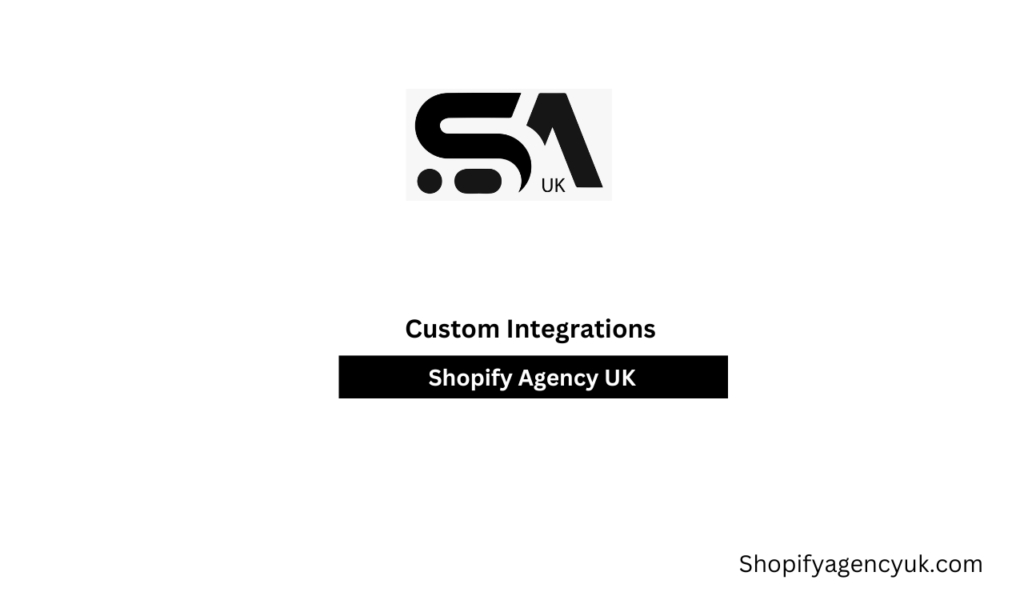As the e-commerce industry undergoes revolution, Shopify is the main namesake of such reconstruction. It is an adaptable platform having a good degree of customization that can be used to multiple businesses. Shopify offers the powering of Custom Integrations through APIs as one of its most stout features.
These integrations are solutions which the companies may avail of by adding to and modifying sharing of user experience in an authentic way that makes their store truly unique in terms of the company goals fulfillment.
In this post, I sought to delve into the concept of using Shopify APIs to the full in constructing unique integrations, the qualities of the devices developed and the approach they have on the selling of the products.
Either it will be the launch of RFID as a new technique or the addition of the chatbot feature on your website for direct communication, Shopify ranks among the pros when it comes to the adoption of the API. Therefore, with technology like Shopify’s API, managers have countless ways to achieve the desired efficiency in the working.
Understanding Shopify APIs for Custom Integrations
Application Programming Interfaces, or APIs, are a set of programming tools that allow different software systems to exchange data. Shopify’s API provide developers with access to a diverse set of capabilities which they can use to develop Custom Integrations as well as features that are applicable only to a specific store.
Among the others, Shopify comes with the Admin API, which deals with the management of the store at each stage. It the tracking, changes, and the analysis of the store major and the most processed data which are products, orders, customers and inventory.
Admin API: Manages store data like products, orders, customers, and inventory.
Storefront API: Is the pull of product data and collection data not available for custom storefronts.
Graph QL API: Is the faster comparison alternatives to the developers, on the one hand, whose fast query is guaranteed.
Shopify Payments API: Generally handles payment to the gateways and transactions.
By dint of these APIs, the programmers are able to intensify Shopify’s capacities to a degree beyond default, and even more effectively personalized the store to fit their exact specifications and purposes.
Why Use Custom Integrations in Shopify?
Even though businesses which choose Shopify are offered a vast number of built-in functions and apps, still custom integration is the way out, in rare cases, the function to implement is a unique feature. Custom integrations bring the specific features shortfalls in the existing iPhone of the shop. Such include;

Automated Processes: Automation of a large portion of manual tasks such as inventory updates, order processing, or customer follow-ups.
Improved Customer Experience: Editing and custom your product line, action, for instance, creating an user to product personal recommendation or store design questions, will provide a subtle, rather than a clear, the customer will rapidly understand the variety ranging from the given alternatives which can be bought for the best price. Sprinted in here
Advanced Analytics: Integrated with external systems, more detailed data of customers’ behavior, or other points influencing the store’s performance, becomes available. On the other side, personal data like your credit card numbers are stored within the secure web pages of the payment gateways.
I can take a personal approach by accessing Shopify’s API to develop a wide range of code which can be inserted into your current systems thus running better stores without any conflicts in between the software. In other words,
Shopify APIs are so powerful that not only they can breathe new features into the systems but they can also create new entire functionalities that we have never seen before.
Top Shopify APIs for Enhancing Functionality
Let’s detail how exactly go each of Shopify’s leading APIs may be fitted in the content and used for custom integrations.
Admin API for Backend Automation
The Admin API is an incredible automation tool that empowers the merchant to make all operations in the online store much faster which then leads to spending more time around customers.
This API allows not only for the decreasing of back-office costs and the general overhead of the store but it also technicians get to improve the store through the process.
For instance, I would use the Admin API to develop a unique integration that automatically adjusts product availability based on real-time sales data.
Your Shopify store can now synch to the front while a rear warehouse facility is the source of the product data, thus stock-out and overselling will be hard to happen as the system adjusts the numbers of the products.
There is a scenario where one of the commonest BO fin (Business Operations Finance) operations around order management is included in it.
Thus, Shopify APIs integrated with CRM platforms can increase the efficiency of customer interactions, offering quicker and more personalized assistance.
Storefront API for Custom Shopping Experiences
Storefront API from Shopify is a powerful entity set in the court of businesses’ need of a fully-customer-tailored storefront. The technology permits the corporate strategies to be put in place without worrying about specific occurrence details such as the quantity of obtained data through sales, and etc.
Developing a mobile app, a custom web experience, or an integration with a third-party platform, you can use the Storefront API that includes product information, customer accounts, and checkout processes data to get access to.
For instance, the Storefront API is a perfect example of the headless Shopify store when backend functionality and user interface are separate. This makes it possible for the design team to be more innovative and thus offer cuts in loading times and better interactions.
Additionally, if you are to do an integration with other platforms, e.g., WordPress or React.js, the Storefront API plays a vital role in the seamless communication between these software’s and the Shopify server.
Graph QL API for Data Flexibility
Graph QL APIs look very promising. In addition to their flexibility, they are more efficient than REST APIs thus are a subscription pick per request ask. As far as Graph QL is concerned, you can make the query specific enough to extract only the data you need. This minimizes the number of API calls and improves the performance of the system.
Particularly for those firms who want to deal with large amounts of data or have a greater need for more complex queries, the Graph QL API can be a valuable addition.
Just to give you an example, I would use the Graph QL API to put together for you a custom report that collects data from all different parts of your Shopify store such as sales, traffic, and customer behavior.
This results in a higher level of decision-making and ultimately the potential for you to be able to optimize your processes.
The fact that by applying a Graph QL technology makes it easy to integrate external platforms into the Shopify system either is ERP (Enterprise Resource Planning) or logistics platforms.
Shopify Payments API for Custom Payment Solutions
The main aspect of any e-commerce store is dealing with the transactions and Shopify offers several ways for integrating with payment gateways through the Payments API. This tool will allow you to design custom checkout experiences and include payment options which are not natively supported by Shopify.
An example is if your online store does transactions around the globe, it would be helpful to offer local payment methods per specific regions. I would accomplish this a table board is shown on the UX with the country symbols, and under each symbol, the payment method will be written.
I can work with the Payments API and regional processing gateways to guarantee that you have the payment options that match your customer preferences. In the end, this will reduce the shop exits and zero the level of dissatisfaction caused by a lack of a payment option they trust.
Furthermore, if some aspects of your business such as refunds and order processing are unique to your business, you can use the Payments API to automate such tasks and thus smooth things over.
Key Benefits of Custom Integrations Using Shopify APIs
There are numerous benefits associated with the usage of custom integrations in Shopify’s ecosystem. This includes the strengthened store operations and a more happy and satisfied user base.
1. Scalability
The growth of the business is conducive to the development of the commerce platform. With the custom integrations, a merchant can attend to different chores of the e-shop, thereby the efficiency of his store is primarily a function of his time management skills.
For instance, a bespoke integration with a high-tech logistics platform can relieve the shop on the operations side that are concerned with stock and orders completion mainly.
2. Improved Customer Satisfaction
Shifting towards the development of personal-income generating web-projects by providing a range of site-added user constitutive information is a relatively painless and seamless process with the Shopify platform.
Very often companies would like to add major components that are not out there. The custom integrations among others allow companies to overcome such insufficiency.

In addition to the sleek browsing experience, personalized product recommendations, advanced contact methods and faster order submissions, the integrations not only provide an improved user interface but also result in a much more pleasant shopping experience which results in customers buying more and being happy.
3. Data-Driven Decisions
The most important advantage of Shopify APIs is that they give the retailer the capability to extract detailed, real-time data from the store. Data is itself a tool and the light bank of various business decisions, including a dissemble analysis of the trends, marketing tactics, or efficient price setting by customer behavior.
For example, by connecting Shopify with an external analytical platform, I can observe customer behavior more closely, eliminate problem areas and make improvements both for the shopping experience and your store’s performance.
4. Unique Features That Set You Apart
Custom integration should be seen as a means to end the variety in shops – customizing core traits of the Shopify stores through the use of API custom hooks, adding a new customer penalization of e-shop with all the necessary trend-oriented components.
You need the uniqueness of special procedures such as a checkout mechanism that will keep the customer involved all the way through, loyalty programs for customers, and more like integration with marketing channels to be able to provide all the useful information about functionality.
Conclusion
Hair integrations (apps) in Shopify APIs introduce multifarious ways to transform the platform of Shopify to a higher level of functioning.
The custom integrations are designed to benefit all stakeholders involved, not only the customer but also managers and coordinators who work with data and interface efficiency thus helping them in providing better services to their customers.
With Shopify’s Admin, Capitalism, Graph QL, and Payments APIs at your company’s disposal, your store can be really specific to your conditions and do so in a very fluid and pleasant manner for your customers.
